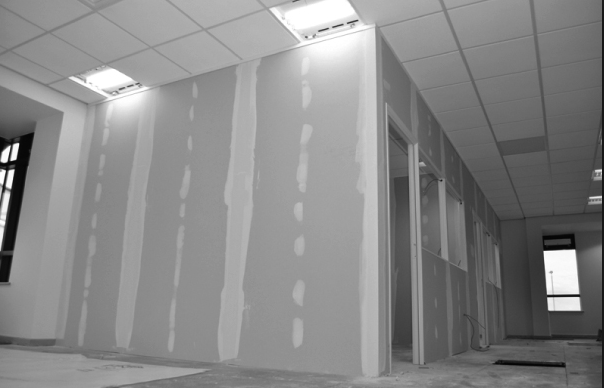
Given that plastering has been around for many hundreds of years, dry lining in comparison is still relatively new. But, as with many developments in technology it’s something which has saved many plasterers a lot of time and effort and that is why the role of drylining in construction is an important one.
Drywall is a panel made of gypsum plaster which is pressed between two thick sheets of paper and is used to make interior walls and ceilings. It can also hide pipes and wires, create space for insulation and smooth out uneven surfaces before they’re decorated.
Where it might take weeks to plaster a house the traditional way, with dry lining, using metal stud partitioning or plasterboard sheets, the job can be done in a couple of days.
Back in the last century drywall would be cut to size and fixed to the wall with nails or glue, but, as the standard of the drywall has improved over time, so have the accessories available to help get the job done, so drywall screws are more commonly used.
Brief history of drylining
The first forms of plasterboard were created in the UK at the end of the 19th century, then into the 20th century Gypsumboard evolved and the materials used to make it moved on, from using inner layers of felt paper to paper based facings.
As plastering tools and equipment developed more towards the modern day, plasterboard evolved even further and became easier to install and measure, while becoming lighter and less brittle. The materials used to fill the joints became more effective and tools such as automatic taping machines were developed.
Over time drywall has not only had to evolve to make the application of it easier but it has also had to keep pace with issues such as the environment, health and safety regulations and carbon footprinting.
How it’s used today Today
Today dry lining has many functions and often those working in the industry will appreciate the opportunity that it brings to make a real difference when changing the overall look and feel of a place to give it a new purpose.
Depending on the reason that you’re putting drywall up for, it can be finished to a Level 4 standard or for real perfection in high end applications you can go to a Level 5 finish to give some very visually pleasing results. And that’s before the paint even goes on the wall.
From lowering ceilings and raising floors to creating new spaces, rooms and corridors within already existing structures, it’s a physically demanding but rewarding job which can produce a feeling of satisfaction at the end, when you see what sort of results your work can achieve.
Gypsumtools stock professional drylining tools
We have been scouring the globe for the best dry lining tools and accessories there are for quite a good few years now. If you would like to find out more about the kind equipment we have in stock, you can take a look through our stock online or get in touch to find out more.


One Reply to “The role of drylining in construction”